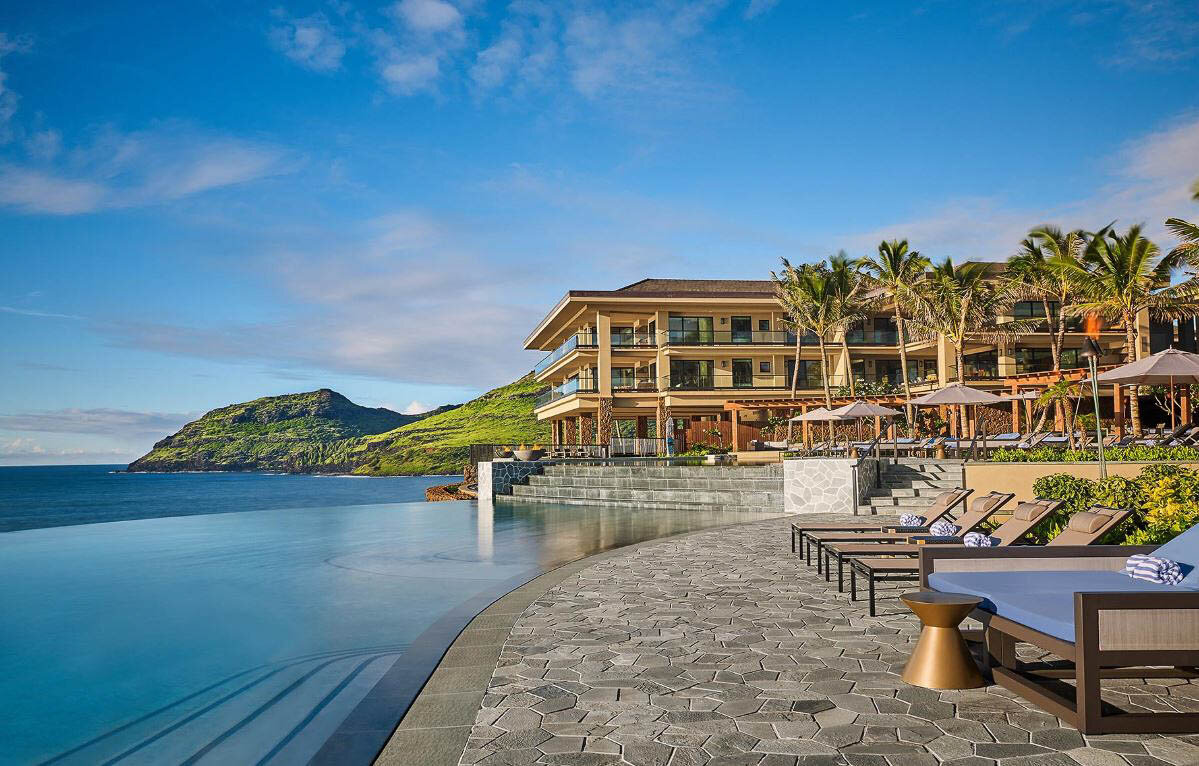Poss has established an enviable reputation as a designer of exquisite private homes that blend seamlessly with their environments, leveraging nature’s glory while expressing each owner’s unique personality. “Our design of private homes is timeless and always elegant, yet comfortable. Classy, timeless, tranquil,” says Bill Poss, the company’s founder.
That ethic translates readily to hospitality design. Timbers Kiawah, a luxury fractional resort community, is a prime example. It was the first new development on Kiawah Island, off the coast of South Carolina, in more than 30 years—and well worth the wait. Poss Architecture + Planning and Interior Design created 21 beautifully appointed residences nestled along the coastline, sheltered by tall pines. South Carolina’s Lowcountry flavor is refined and uplifted by contemporary design—big windows, wide open spaces, and a soft, neutral color palette welcome the breathtaking setting in.
“Our hospitality projects vary in size from 90 to 450 rooms,” Poss explains. “We design and create spaces that accommodate a lot of people, including staff, guests, and visitors.” Then there are the spaces that serve a more public function, like a spa or workout facility, or an onsite restaurant. Still another consideration is the spaces that support the business operation, including the back office, laundry, maintenance room, and other behind-the-scenes areas.
“Our hospitality group is growing, and we are so lucky to have had the opportunity to share our ideas and talents working across the country,” says Kevin Morley, Poss Architecture + Planning and Interior Design partner who is intimately involved in hospitality design.
“This is happening because we do understand the concepts of creating that unique and special place in the world that not only provides sound design principles for the product type, but the more intangible qualities of a bespoke guest experience and strong ties to the surrounding regional history,” he explains. “But it goes without saying that all of these qualities mean nothing if we cannot understand and manifest these ideals through the mastery of creating designs that fit within our clients’ budgets and business models. Looking back through our past projects, I feel we have a track record of success in providing these skillsets to our clients, and this is a main factor why our clients continue to choose Poss for their next project.”
Hospitality design is all about the guest experience, Poss says. While it’s true that Americans vacation less than their European counterparts, their expectations are greater. Successful properties are designed to enrich the guest experience—from check-in to departure, he explains.
“It must seem as though these two project types differ like day and night, but actually I feel that they have several similarities, Morley says. “They both revolve around design solutions that speak to lifestyle and the use of the building or resort by its homeowners or guests. Defining this level of service and lifestyle help to drive the organization of a design from spatial relationships to product selection and finish. Using our extensive residential background, and understanding these concepts help Poss to expertly transition between, and bring our custom residence experience to our bespoke hospitality resorts,” he says.
“The main difference is that there is a heightened challenge and awareness of the operational side of a hospitality project; understanding the separation of the guest and operational sides of a resort and developing that balance between enough operational facilities while still being the most efficient solution possible.”
“In hospitality design, the focus shifts to public space versus private spaces”, says Nikola Gradinski, Poss Architecture + Planning and Interior Design senior designer. There’s an added wrinkle, she says: hospitality properties must convey a strong brand identity.
The qualities resort guests are searching for are much the same as those the high-end homeowner seeks, Gradinski says: “taste, elegance, innovation, and luxury.”
“Our resort designs must respond well to different climates,” Poss says. “Hospitality clients tend to want to provide entertainment to guests and materials have to be durable hotel grade. At the same time, they all have to be pleasing and convey a sense of comfort and welcome.”
“There is usually a lot of discussion revolving around the efficiency of a hospitality project,” Morley explains. “This can manifest itself in several conversations, but usually involve discussions surrounding operations, the efficiency of which we move guests through the facility to their rooms or amenities, and the exterior ‘skin’ of the project.”
“The other critical piece of any design is to provide a sense of place; to create a project that fits into the land and has a sense of the history of the place where it resides. Our projects are successful because of the care we take to develop this intrinsic relationship with its surroundings. These projects are very rewarding personally when we balance these issues and ‘get them right’. The result is a project that is financially successful for the ownership group, and a memorable experience for the guests.”
“Meeting and exceeding the growing challenges and expectations of the industry, creating spaces and places that can be enjoyed by people from all walks of life,” is a uniquely satisfying aspect, Gradinski says.
In addition, designers have a bit more freedom to explore the new, the latest, today’s design favorites. “Hospitality projects can and should reflect current trends because they get upgraded and updated quite frequently,” Poss says. “But fashionable has to be comfortable and durable.”
“Health and wellness and environmentally responsible design,” are the watchwords now in the hospitality industry now, Gradinski says, as long as they are backed up by “integrity and ingenuity.”






